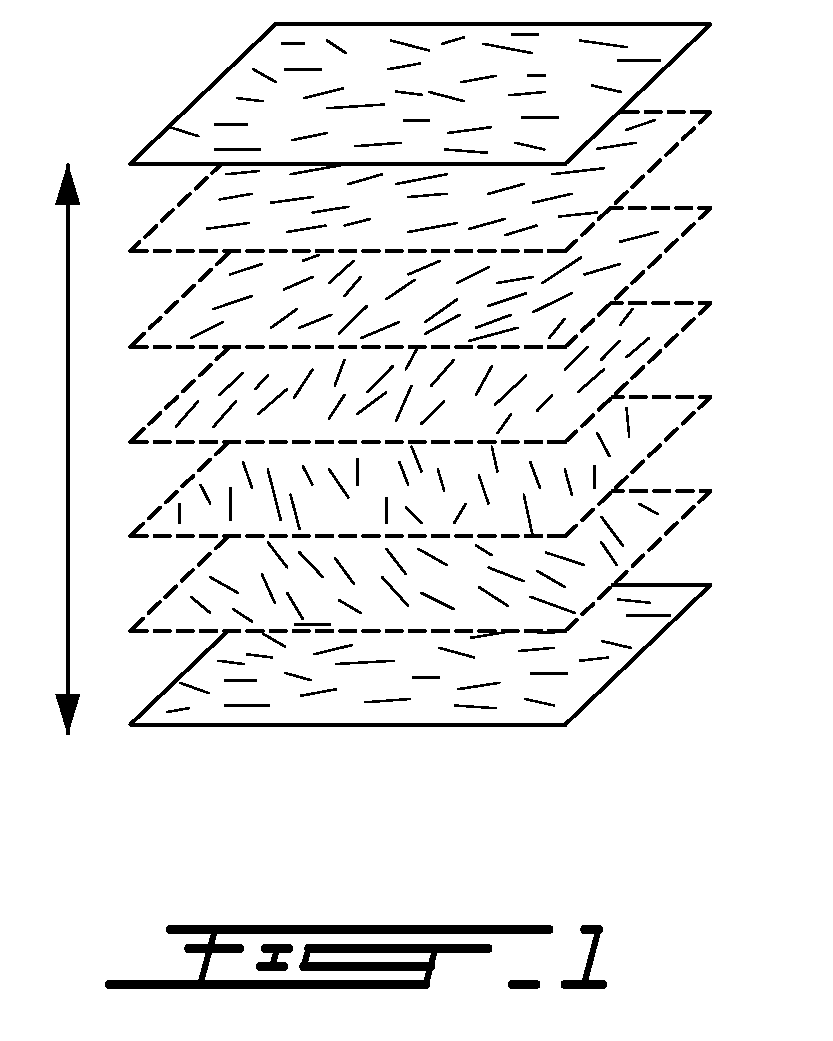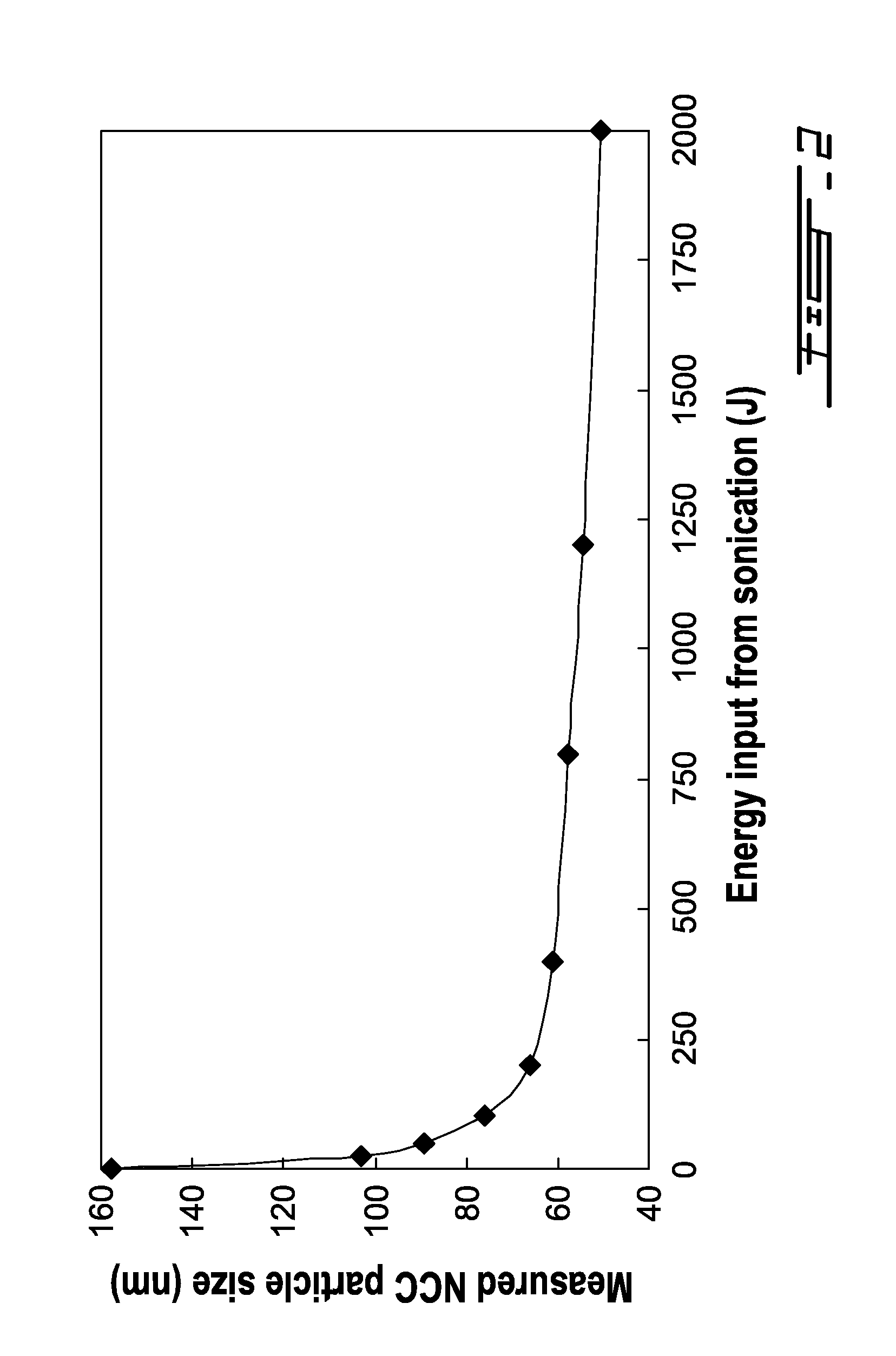Control of nanocrystalline cellulose film iridescence wavelength
a technology of nanocrystalline cellulose and iridescence wavelength, which is applied in the direction of nanotech, mechanical vibration separation, coating, etc., can solve the problems of inability to shift the iridescence wavelength of solid ncc films in the direction of the red end of the visible electromagnetic spectrum, inability to achieve further sonication, and inability to achieve the effect of reducing the iridescence intensity of solid ncc films
- Summary
- Abstract
- Description
- Claims
- Application Information
AI Technical Summary
Benefits of technology
Problems solved by technology
Method used
Image
Examples
example 1
Increasing Sonication Energy
[0069]15-mL aliquots of a 2.8% (w / w) acid-form NCC(H-NCC) suspension were sonicated according to General Procedure A disclosed above, with energy inputs ranging from 0 to 1300 J, and dried at ambient conditions into solid H-NCC films. The resulting films exhibit iridescence in reflected light with colours ranging from very faint bluish to gold-green. The dominant wavelength of reflection at 45° incident D65 illumination and 45° reflection shifted from <390 nm at 200 J sonication to ˜660 nm at 1300 J (see FIG. 3).
[0070]A plot of a* and b* values (CIE) measured at 45° incident D65 illumination and 45° reflection angle shows similar trends in the a* and b* values with increasing sonication (see FIG. 4). The a* values are initially close to zero, as expected for a blue / ultraviolet film, then increase to positive (red) values while the b* values decrease to very negative (blue) values, again as expected for blue films gradually shifting towards longer waveleng...
example 2
Increasing Sonication Energy with Cooling
[0072]15-mL aliquots of a 2.8% (w / w) acid-form NCC suspension were sonicated according to General Procedure B disclosed above, with energy inputs ranging from 2000 to 9000 J, and dried at ambient conditions into solid NCC films. The resulting films exhibit iridescence in reflected light with wavelengths in the infrared region of the electromagnetic spectrum (see FIG. 5). The dominant wavelength of reflection at 45° incident D65 illumination and 45° reflection shifted from 710 nm at 2000 J sonication to greater than 730 nm at 9000 J (see FIG. 5). The mechanism causing the wavelength shift is not desulfation due to (localized) heating from sonication, as sonication has not been found to have an effect on sulfur content when cooling is used [14].
example 3
Suspension Volume During Sonication
[0073]Experiments performed in this lab have shown that NCC film basis weight alone has not been found to affect the iridescence colour of the NCC films; accordingly, 15- and 25-mL aliquots of a 2.8% (w / w) acid-form NCC suspension were sonicated to 750 J energy input according to General Procedure A disclosed above and dried at ambient conditions into solid NCC films. The resulting films exhibit iridescence in reflected light with wavelengths in the visible region of the electromagnetic spectrum. Everything being equal, sonicating smaller samples produces films reflecting longer wavelengths: The 15-mL aliquot film reflects red / orange light normal to the film surface, while the 25-mL aliquot film reflects in the yellow-green region of the spectrum. The dominant wavelength of reflection at 45° incident D65 illumination and 45° reflection blue-shifted from 550-560 nm for the 15-mL aliquot to 440 nm for the 25-mL aliquot (see FIG. 6).
PUM
 Login to View More
Login to View More Abstract
Description
Claims
Application Information
 Login to View More
Login to View More - R&D
- Intellectual Property
- Life Sciences
- Materials
- Tech Scout
- Unparalleled Data Quality
- Higher Quality Content
- 60% Fewer Hallucinations
Browse by: Latest US Patents, China's latest patents, Technical Efficacy Thesaurus, Application Domain, Technology Topic, Popular Technical Reports.
© 2025 PatSnap. All rights reserved.Legal|Privacy policy|Modern Slavery Act Transparency Statement|Sitemap|About US| Contact US: help@patsnap.com



